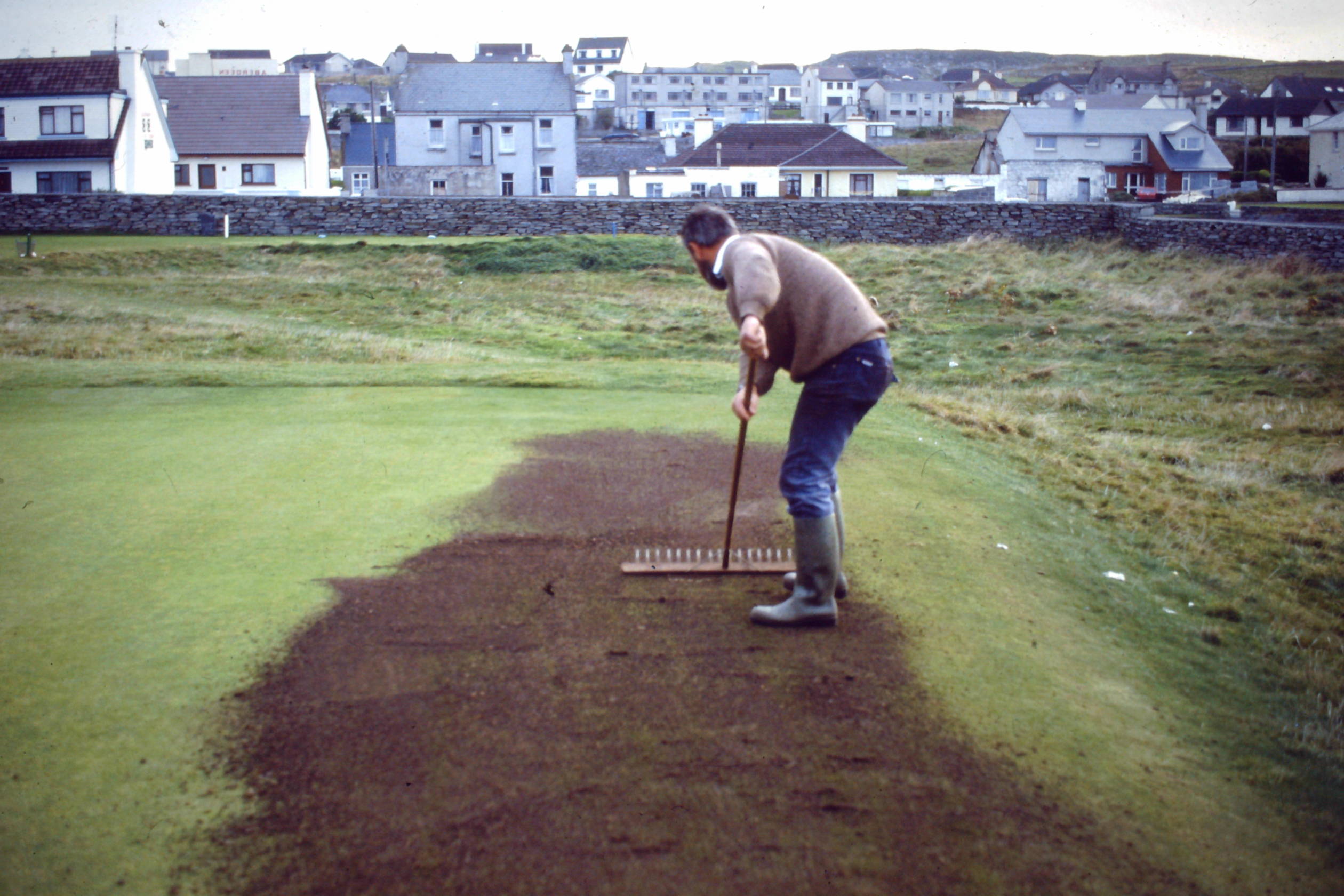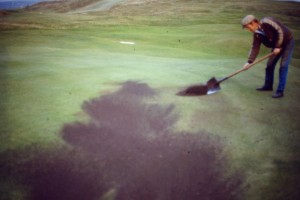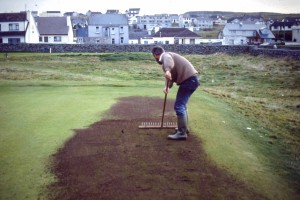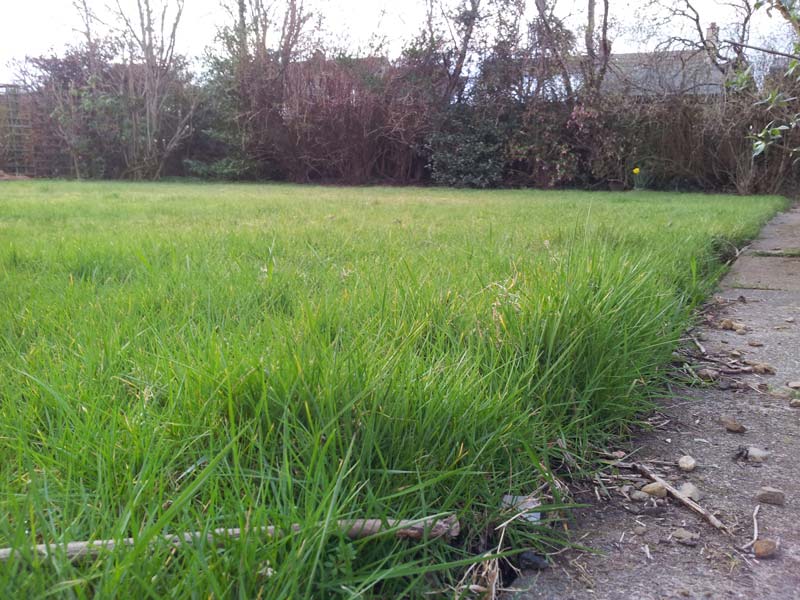
Topdressing your lawn in Autumn and Winter
Topdressing is what we call applying a dressing of sand or sand/soil to the surface of a grass area and then working the material down into the sward. Topdressing on a regular basis dilutes the thatch layer (dead and dying grass roots, stolons, rhizomes and leaf material) which helps to improve drainage, keeping the surface much firmer and drier. It also smooths out any irregularities and provides some protection against wear problems.

Aplying a topdressing in the Autumn can be an added benefit as it provides some protection for the grass plant crowns, the main growing point, against frost, ice and snow.
It is very important to topdress when the grass is growing reasonably well to avoid any smothering, and also, for the same reason, to ensure the dressing is worked well into the sward.
The most important aspect of topdressing is the material used. I personally prefer straight sand as it is much easier to ensure a consistant product is used once a good supplier is sourced. Consistency is very important as layering different grades of materials can create severe drainage problems. I would not ever advise using peat either in construction or in topdressing as it is inert and holds too much moisture, plus it is not environmentally friendly. If organic matter is required there are plenty of alternatives such as composted green waste or manure.
Do not be tempted to use a cheap building sand or similar as these are not refined enough to provide good drainage characteristics. The sand should be silt free and have the majority of the sand particles in the range from point five to point seven five mils. Any decent quarry or sand supplier should be have these figures available. A good check on silt content is to grab a handfull of sand and squeeze it tightly, when you release it the sand should fall apart, if it sticks together there is too much silt and it will restrict drainage.

When applying the topdressing it is important to ensure an even application which will make it easy to work the dressing into the sward. There are professional machines available. but for the domestic sized lawn spreading with a shovel is the best way, throwing the material over the surface as evenly as possible. A good Autumn dressing would be at a rate of around two kilos per square metre. The dressing is then best left to dry out a little, a breezy dry day is best for the operation anyway, before working it into the sward.A chain drag mat or trulute is best if you can get a hold of one of them, but using the back of an upturned rake, a short ladder or rubber link doormat dragged sideways on a rope, will all do the trick. Make sure all the sand is worked into the sward by repeating the operation in several directions until the surface is level and free of sand.
I would normally advise spiking or forking the lawn before applying the dressing to get some air into the soil and allow some sand to filter down into the rootzone to help improve the drainage, so I will deal with aeration and the relief of compaction in my next article.
Duncan



Great guide to top dressing Duncan
Can you top dress a bowling green in the winter and when is the best month to do it
Hi Peter, Thanks for getting in touch, sorry for the slow reply, been on holiday.
You can top dress fine turf any time the grass is growing a little, which in our climate is most of the time. The important thing to remember is that the quicker the grass is growing, the heavier dressing it will absorb. This means that the main dressing is best done in the early Autumn, around two kilo per square meter, more if hollow coring, following scarifying and light feeding, while the grass is still growing fairly strongly. From mid October through till late March, light dressings are more appropriate, no more than a kilo or so per square meter.
If you would like a full maintenance program recommended just get in touch, I can save you a substantial sum of money.
I hope this helps you. Duncan.